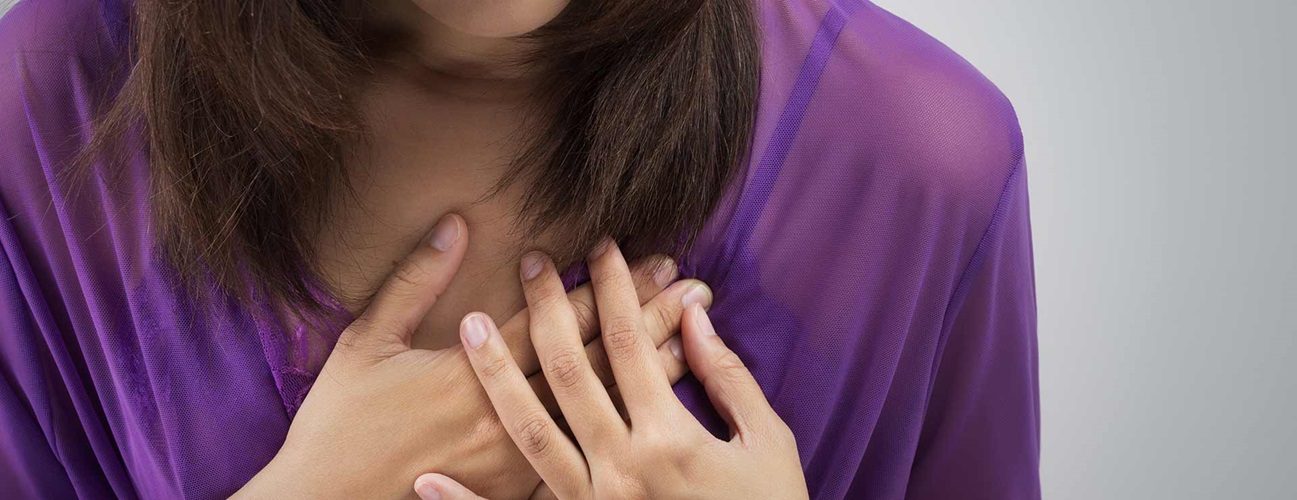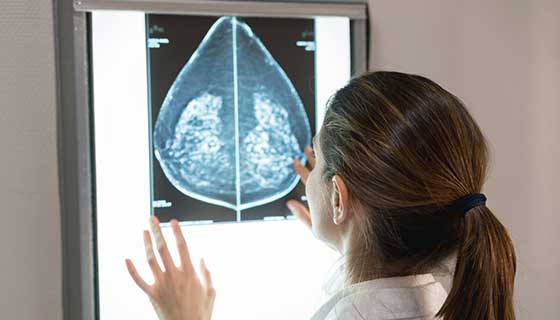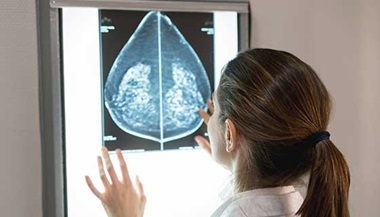Breast Pain (Mastalgia)
What is mastalgia?
Mastalgia is breast pain. There are 2 main types of mastalgia:
-
Cyclical breast pain. The pain is linked to menstrual periods.
-
Noncyclic breast pain. The pain may come from the breast. Or it may come from somewhere else, such as nearby muscles or joints, and may be felt in the breast.
The pain can range from minor discomfort to severely disabling pain in some cases. Many women with breast pain are afraid they may have breast cancer. But breast pain is rarely linked to breast cancer. It should not be considered a possible symptom of breast cancer.
What is cyclical breast pain?
The most common type of breast pain is linked to the menstrual cycle. It is nearly always hormonal. Some women begin to have pain around the time of ovulation. The pain continues until the start of their menstrual cycle. The pain may be barely noticeable. Or it may be so severe that you can’t wear tight-fitting clothing or handle close contact of any kind. The pain may be felt in only one breast. Or it may be felt as a radiating feeling in the underarm area.
Some healthcare providers have women chart their breast pain to figure out if the pain is cyclical or not. After a few months, the link between the menstrual cycle and breast pain will appear.
Researchers continue to study the role that hormones play in cyclical mastalgia. One study has suggested that some women with this condition have less progesterone than they do estrogen in the second half of the menstrual cycle. Other studies have found that an abnormality in the hormone prolactin may affect breast pain. Hormones can also affect cyclical breast pain due to stress. Breast pain can increase or change its pattern with the hormone changes that happen during times of stress.
Hormones may not provide the total answer to cyclical breast pain. That’s because the pain is often more severe in one breast than in the other. Hormones would tend to affect both breasts equally. Many researchers believe that the answer may be a combination of hormonal activity and something in the breast that responds to this activity. More research is needed.
What are the treatments for cyclical breast pain?
Treatment for cyclical breast pain will depend on your symptoms, age, and general health. It will also depend on how severe the condition is.
Treatments vary greatly and may include the following:
-
Not having caffeine
-
Taking vitamin E
-
Eating a low-fat diet
In some cases, various supplemental hormones and hormone blockers are also prescribed. These may include:
-
Birth control pills
-
Bromocriptine (which blocks prolactin in the hypothalamus)
-
Danazol, a male hormone
-
Thyroid hormones
-
Tamoxifen, an estrogen blocker
Supplemental hormones and hormone blockers may have side effects. In addition, the risks and benefits of such treatment should be carefully discussed with your healthcare provider.
What is noncyclic breast pain?
Noncyclic breast pain is fairly uncommon, feels different than cyclical mastalgia, and does not vary with the menstrual cycle. Generally, the pain is present all the time and is in only 1 specific location.
One cause of noncyclic breast pain is trauma, or a blow to the breast. Other causes can include arthritic pain in the chest cavity and in the neck, which radiates down to the breast.
What are the treatments for noncyclic breast pain?
It’s more difficult to figure out the best treatment for noncyclic breast pain. That’s because it’s hard to know exactly where the pain is coming from. In addition, the pain is not hormonal. Treatment will depend on your symptoms, age, and general health. It will also depend on how severe the condition is.
Your healthcare provider will do a physical exam and may order a mammogram. In some cases, a biopsy of the area is also needed. If it is found that the pain is caused by a cyst, then the cyst will be aspirated. This means that a small needle will be used to remove the liquid contents of the cyst. Depending on where the pain starts, treatment may include pain relievers, anti-inflammatory medicines, and compresses.
Sign Up for Our Free Newsletter

One of the best things you can do to protect and improve your health is to stay informed. Your Health is a FREE e-newsletter that serves as your smart, simple connection to the world-class expertise of Johns Hopkins.






